Introduction:
A lot of newcomers spend a lot of hours on choosing a sewing machine and in most cases,
they ignore the smallest and
most important thing among the sewing machine parts; the sewing machine needle. This thin shard of metal makes the difference between professional,
nice looking stitches and ratty, a source of frustration mess of skipped stitches, puckered seams and frayed threads. Sewing like a professional is all about the right needle to use on your fabric, thread and project.
Here, you will learn about how to succeed in 2025 including:
Depending on the uses and the name of sewing machine, the various types of sewing machine needles.
Top needle brands of this year Seaming needle sizes and types to fabrics and thread lings Insert and adjust your needle using the following ways Commons difficulties triggered by the utilization of incorrect needle- tips and
the ways to correct them Here is a way to cut through the demystifying to enable you generate more artwork in the shortest possible time.
The way a Sewing Machine Needle Works There are five important parts of a sewing machine needle:
Shank: The one which goes in your machine. It is flat on one side with home sewing machines.
Shaft: the long expanse that goes through the cloth. Groove: A long groove in the front with placing place of the thread.
Eye: the hole by the place where your thread is backed through.
Point: The point which holes your cloth. When you are sewing, the needle and the bobbin-hook collaborate so that the needle pushes the upper thread exactly through the fabric to hook the bobbin-thread which is at the bottom.
When the onset of some wrong needle, this process is interfered with-this results in lost stitches or the thread breaking.
The influence of Needles on the Quality of Stitches The right needle goes easily through fabrics without destroying the fibers. This will book the thread securely on the groove to balance the tension. It avoids puckering and makes the stitches even. When it is dull, or bent, or the wrong needle to the fabric that is in need of doing, you will suffer,–however superior your sewing machine!
The Major Types of Sewing Machine Needles in 2025
In case you need a guide who tells the most common needles and when to apply them, you now need it only a few seconds:
1. Universal Needle Rather blunt point. Good general sewing woven and some knit. Sizes: 608 to 9014.
2️endancele Needle The form of needle is rounded tip, which slides between knit fibers rather than pierces them. It is best on T-shirts, stretch jersey, and rib knits.
3 Stretch Needle In the case of highly elastic materials such as Lycra, spandex and swimwear. Special scarf design minimizes skipped stitches.
Tip is a little bit more rounded as compared to that of ballpoint.
Microtext Sharps Needle Fine sharp point to be precise. Ideal when used on tightly woven material such as silk, micro fiber or faux suede.
Good to use on delicate materials: top-stitching.
5 Jeans/Denim Needle Heavy, robust shaft which is very sharp.
Thick / tightly woven: Works with denim, canvas and twill. Less breakage on bulky seams.
6️ Supplies Quilting Needle Thin, powerful needle that is meant to work with several layers of fabrics and batting. This prevents missed stitches on quilts.
7️ oxen Needle As opposed to punching, the wedge-shaped tip cuts through leather and vinyl. DO NOT apply on woven, or knit fabrics, which will be destroyed by it.
8 Embroidery needle Bigger eye to avoid shredding of the threads. Make scarf polished to minimize friction against delicate embroidery threads.
9. Topstitch Needle Eye deep and large. Suitable to thicker decorative stitches and top stitching. Twin and Triple Needles Designed to use in decorative stitching and hemming stretch material. Make similar lines of stitching.
Reading the Needles How to The vast majority of needles are European size/US size, e.g: 70/10:
Clothing made of light material 80/12:
Medium weight materials Heavy fabrics 90/14
The more the number, the thicker the needle. And it is equally important to note that the type perfectly used must also be the correct size!
Top Needle Brands Sewing Machine 2025 Easy to identify (color coded).
Organ Needles: Cheap, reliable and found in numerous factories around the globe.
Klassen: The brand is renowned as of stable quality and broad variety.
Singer Needles: readily available, simplistic general-purpose needles. You can easily end up with bent needles, burrs, and bad stitching when you purchase cheap no-name needles, we cannot and should not risk our fabric!
Choosing the Needle to Use with Your Fabric How.
Consult this fast handguide and ensure it is always correct:
Medium cotton and linen: universal 80/12.
Velvet/Coloma blends- Velvet/Coloma 1:2, 90/14-100/16.
Leather/ vinyl: Leather needle, size 90/14-110/18.
Quilting: quilting needle, size 75/11-90/14.
Symptoms of Having Wrong Needle When you notice any of these then stop and change your needle:
Omitted stitches Tears in your garment or gaps in your material Lipstick mark seams Thread shredding or frequent break at thread Sound of a click or pop when sewing
What is the Frequency of Changing Your Needle?
One of the first-time user errors is using the same needle for several weeks and even months. A blunt or curved needle harms your fabric and adds additional pressure to your machine. Eight to ten hours:
General rule: Unless you are going to a different project, or a different type of fabric (best never to do both), change your needle after every eight to ten hours of sewing.
In our modern sewing world, this is done by inserting and adjusting a sewing machine needle.
1. Set your machine off. In no circumstances replace the needle with power on!
2.Move the needle up into the highest position. Make a turn of the handwheel towards you.
3. Relax the screw of the needle clamp. Keep the needle to avoid the situation of them falling into the machine.
4️ detailed withdrawal of the old needle. Dispose it safely in a carrier.
5 insert new needle with flat side to back. Keep pushing it up till it refuses to move any more.
6 Tight down the needle clamp screw. A wiggly needle may jitter your machine out of schedule. On most modern machines you can vary between left, center and right needle positions to:
✅ Zippers Cording ( Edge stitching ) Ornamental picks The use of your stitch width/position dial can be found in your manual. Diagnostics of Needle Problems Promised stitches? See that you use the proper type and size.
Be sure that the needle is inserted through completely and straight. Take a fresh needle.
Broken Thread?
Take good thread and proper size needle. Inspect needle eye to look at burrs. Thread your machine again.
Holes or Snags on Fabric?
On knits use a ballpoint. Lightweight fabrics are used with a smaller needle.
Pro Tips to Cause Needles to Last Avoid pinning: never stitch over a pin-point, unless you want to bend or break your needle.
Label cases that hold needles.
Make a record of the needle in your machine. A material first must be tested on scrap fabric. Buy needles in the form of multi-packs so you are never out.
Frequently Asked Questions on Sewing Machine Needles
Q: Can I insert any brand of needles in my machine?
Yes; provided it is a regular flat-shank needle. Never forget to refer to your manual.
Q. ought I to sharpen a blunt needle?
No– substitute it. Burrs may be left as a result of sharpening and destroy cloth.
Q: What is wrong with my needle getting all broken?
Wrong type, wrong size, hitting pin, or it is not inserted.
Short Cut: Needles and Fabric Compatibilities Fabric Type Needle Type Needle Size Silk,
Chiffon Microtext/Sharps 60/8 -70/10 Cotton,
Linen Universal 80/12
Denim, Canvas Denim/Jeans 90/14 -100/16 Jersey,
Knits Ballpoint/stretch 70/10 – 80/12
Leather, Vinyl Leather 90 /14 110/18
Quilting Top Quilting Needle R 75/11 -14/90
Conclusion, Have The Right Needle, Have The Right Sewing
Selecting a proper sewing machine needle is the detail that can separate you nothing less than frustrating mishaps and gorgeous professionally-quality projects. Make it simple:
Choose the appropriate type of your fabric
Select the right size of thickness
rotate your needle often
Never forget to put it in correctly
When you learn these fundamentals you won t get into a bind before you even get started. You save the fabric, or your time, and your sense of sanity.
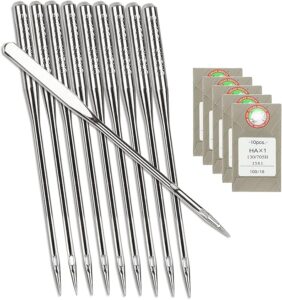
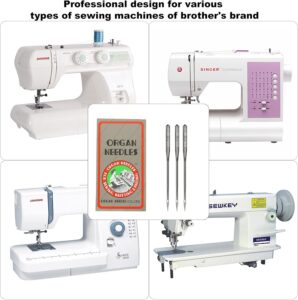
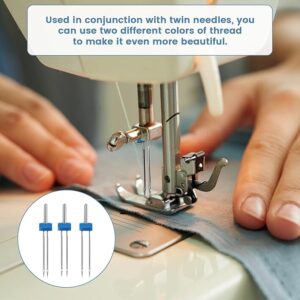
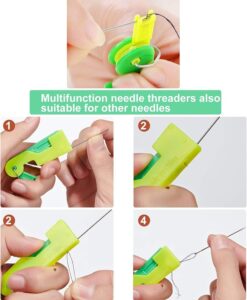
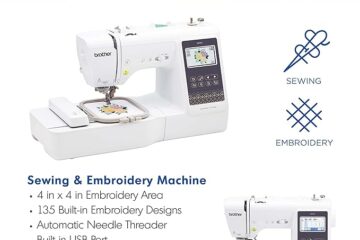
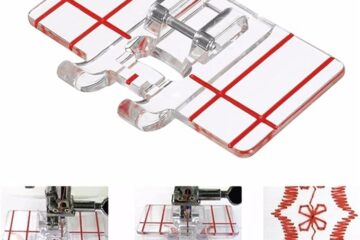
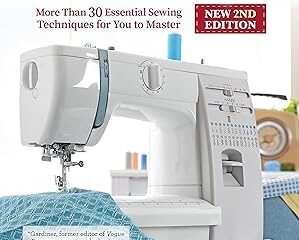
0 Comments